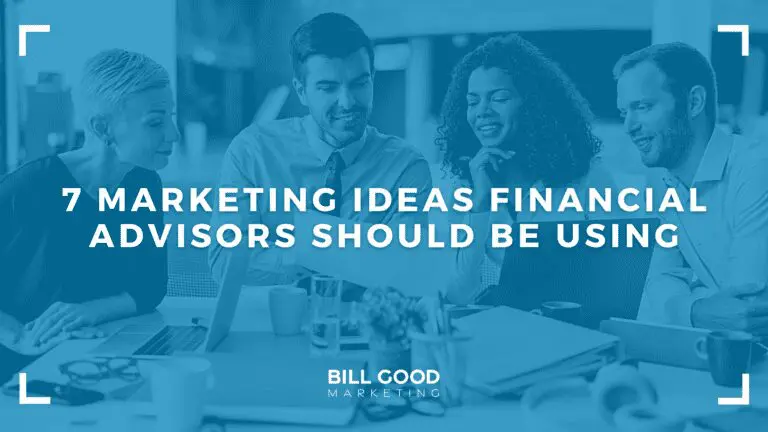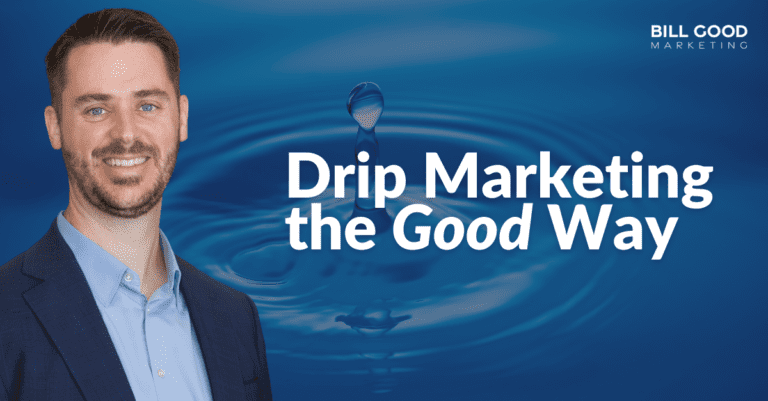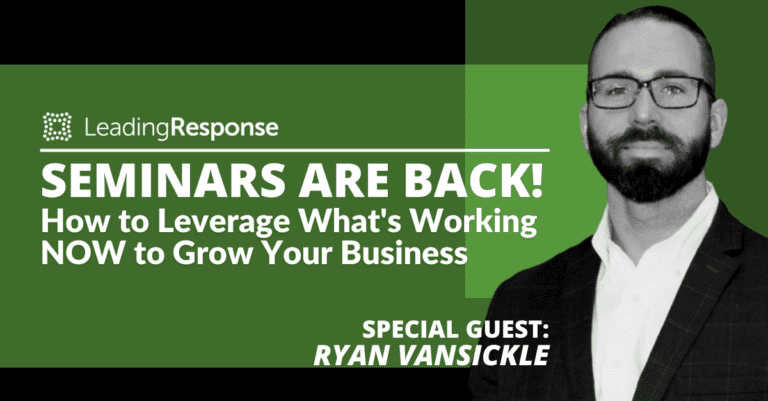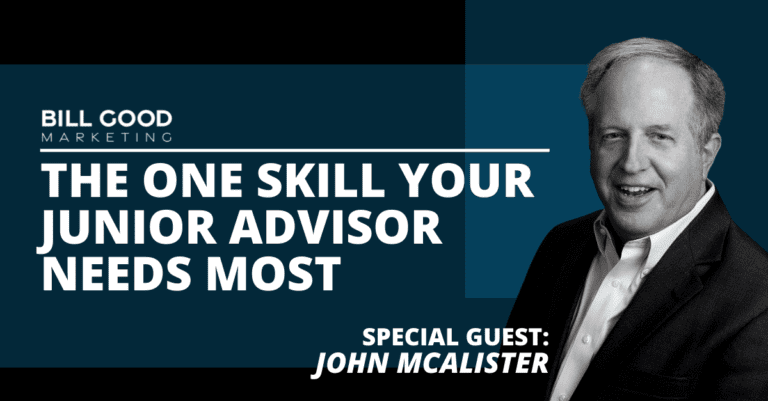Like it or not, marketing is a big part of growing your advisory business. A good marketing plan and targeted marketing campaigns give prospective clients an opportunity to get to know you and gives you the opportunity to build trust. And when done correctly, this gentle introduction provides both of you with a way to create a relationship even before that first appointment.
These 7 marketing ideas will help you establish a strong online presence, connect with potential clients, and build your identity as an industry expert.
- Identify your ideal clients to get introductions to their friends and family
- Have a strong website
- Create a Content Marketing Plan that highlights your expertise to your target audience
- Send enjoyable and friendly emails and direct mail that have nothing to do with financial planning
- Hold seminars and/or webinars that put you in front of more potential clients, faster
- Start a podcast to reach a larger audience
- Build strategic partnerships with professionals who service your target market
In this article, we’ll explore these ideas and some other marketing tips so you can get your financial advisor marketing plan right the first time around. A robust plan can directly affect your bottom line, as it helps you build your authority and stay top of mind when prospects need your financial advice.
Identify Your Ideal Clients to Get Introductions to Their Friends and Family
When it comes to excellent marketing strategy, one of the most powerful tools you have is the person you already call a client.
Think about which clients you most enjoy doing business with. Wouldn’t you like to do more business with new clients just like them? Yes, you would.
Fortunately, there’s a ready-made source for these dream prospects: they are the friends and family of your current clients.
Once you identify who your ideal clients are, you discover who they know that you want to know. These identical copies are “clones” of the people you already know. Once you’ve identified them, you can begin the process of getting introductions to those people.
Introductions are similar to, but distinct from, referrals. A referral is when a client tells you about someone they know that you should talk to – or tells that someone that they should talk to you. An introduction, on the other hand, is when a client physically introduces you to someone in person.
In other words, if your client, Bob, says, “You should talk to my brother, Frank,” that’s a referral.
If he says, “[Your name], meet my brother, Frank. Frank, meet my financial advisor, [Your name].” That’s an introduction.
An introduction isn’t necessarily better than a referral, but it’s a faster, more direct path to forming a new relationship. You don’t have to go through a long process to build trust, it’s built in. Think of it as a form of networking. Many of the top advisors we work with devote almost all their marketing resources for cloning. They reason – correctly – that the most valuable potential clients out there are the people they already have a connection with… through their current clients.
Have a Strong Website
Once upon a time, when somebody wanted something, they opened the Yellow Pages to see who offered it in their area.
These days, Google is the go-to. You can also leverage Facebook, LinkedIn, Twitter, and other social media marketing platforms.
While most of your prospects will continue to come from traditional areas (like cold calling, referrals, seminars, word of mouth, and some email marketing), you can bet that pretty much every prospect you generate will look you up online. They’re testing you to see if you’re worth spending any time on. To see if you offer what they need. To see if you’re the type of person they normally associate with.
For that reason, you need a digital marketing strategy to ensure you look good to people who find you online.
There’s another reason you need to start paying attention to digital marketing. While the internet has now been around for decades, for the financial services industry, it’s still a relatively untapped oilfield. But every year, more and more financial advisors are generating more and more leads purely through online means. So, it’s time to start actively getting new leads to come to you instead of just you to them.
In other words, you need to look good and be found.
Anyone can have a website. But most financial advisor websites are cookie-cutter, boring and/or messy affairs that do nothing to help their brand or business.
Your website must differentiate you from other financial professionals.
Your website must tell your story – not a generic one. Through a combination of wording, images, and formatting, it must show whoever visits that you are different from other advisors. It must also demonstrate the benefits of working with you. And it must clearly state your value proposition.
This is how to make yourself look good.
The next question then… is how are you found?
Start a Blog
A large part of the brand awareness challenge is creating content that is both worthy of sharing and provides value to your target audience. If you merely post updates about your firm, share industry-relevant links, and link to the occasional blog post on your website, you won’t make much headway in the quest to heighten brand awareness.
If you choose to start a blog, be aware of the amount of additional work it will take to manage, maintain, and keep your content current. While it may be a low-cost marketing tool, it does require a good investment of your time before you see any kind of results. Do not count on landing that high-net-worth business owner with a few blog posts.
Instead, use your blog strategically to highlight who you are as a person, and define what your personal values are. When the market volatility is alarming, demonstrate your skill as an expert financial advisor by posting thoughtful content that creates calm for your clients and prospects.
And a really easy way to demonstrate your good citizenship, (which is a critical part of your Trusted Advisor brand) is to observe the holidays on your blog by sharing what they mean to you personally, and how they inspire you to be a better human being.
Now, once you’ve posted, share it to the socials and have your team signal boost it by re-sharing. This helps your posts gain traction.
Additionally, a blog is an excellent opportunity to deepen your relationships with Strategic partners. Offer them an opportunity to showcase their own expertise by writing articles for your blog. This exposes them to your audience, and vice versa. Be sure that any guests on your blog also provide you with the opportunity to showcase your wealth management expertise on their website.
Finally, use Search Engine Optimization (SEO) strategies to ensure that all your hard work drives inbound organic traffic to your website. Incorporate relevant keywords and phrases to boost your search engine rankings to make it easier for potential clients to find your website.
Send Enjoyable and Friendly Emails and Direct Mail That Have Nothing to do With Financial Planning
If you’re like most financial advisors, you probably have dozens, perhaps hundreds of connections – many of whom have a lot of money to invest. And most are centers of influence that you do not want to offend.
Just imagine for a moment you are at a church gathering.
You turn to one of the members, who happens to own a very successful small business, and say, “Hey Fred, what’s your liquid net worth, excluding the value of your home and other properties?”
Cringe.
That is a social blunder of the first order. Please don’t do this. Ever.
But there is a socially-acceptable way to prospect your connections without ever breaking that social taboo by soliciting their business.
And it is all about how you position yourself.
You want to claim that emotional real estate in their mind by sending them material that makes them feel good. You can do this via email, or through the postal service. You NEVER solicit or pitch. You keep these messages so low-key, that we like to call them “no key.”
Keep doing this consistently and when they experience a pain point such as a financial change of life, they will call you.
Sometimes it takes time. Sometimes you get immediate results, as happened to Andy who works in a community bank in Hanover, PA. Andy started this process with 35 connections on his list.
And from September, when he started to February when he reported in, this is what happened:
“I was out for BGM training in September last year, and have been using the system since then. In short, it’s awesome. I sent out the intro letter for the campaign two weeks ago and wanted to tell you what happened.
“First, I sent a letter to a gentleman who was the president of the local hospital for 30 years, and retired last year. He called me the day he got the letter, said he didn’t know exactly what I did (until he got the letter), and that he wanted to meet to talk about his personal investment portfolio…unbelievable!
“Secondly, my wife was out with ‘the mom’s group’ on Friday and one of the ladies mentioned she received the letter (her husband is the DA). Apparently, she went on and on about how good it was and that they want to meet with me. Further, another client was there and she chimed in to the whole group on how she has been a long-time client, and was very happy with my service.
“You can’t buy publicity like that as far as I’m concerned. Anyway, I just wanted to let you know…and to say thank you…”
Since it is considered bad manners to solicit people you know, let’s just not do it. That means never or rarely asking for anything. But that doesn’t mean you can’t ask to add them to your mailing list. It’s as simple as turning to Fred on the pew, and saying “Hey Fred, I keep a private mailing list. I don’t ever solicit my friends. I do have some information you would likely find extremely valuable and enjoyable. If you don’t like what I sent, you can always get off. May I add you to this mailing list?”
More often than not, they will agree.
Several times a year, you send out what we call a “feel good” letter. This is a good, old-fashioned letter sent in the mail, printed on your stationary, and stamped with a gorgeous, oversized commemorative stamp.
These are letters based on the values we all share. We recommend you minimally send them out for Memorial Day, July 4, Thanksgiving, and Christmas.
You remain active in your social circles. And once a year, you call the connections on this mailing list and ask them if they would like to continue receiving your letters. Occasionally, you can and should invite one or two of them to attend an event with clients. These events should all be social events. This is part of the way “connections” become prospects and then clients.
But remember this: Don’t prospect your connections. Let them come to you.
By following this process, you could generate a lot of new business.
Hold Seminars and Webinars That Put You in Front of More Potential Clients, Faster
If your goal is to grow aggressively, seminars should be the first marketing tactic you consider. There is no other financial advisor marketing strategy that can put you in front of more potential new clients in a shorter amount of time. Over the years, we’ve worked with scores of advisors who have built $500M to $1B practices through seminars alone – and yes, they still work! One advisor we coach, a young financial planner still in his early thirties, raised $70M from seminars alone in 2019. We also coach many other advisors who bring in $30-50M every year through seminars, in both urban and rural markets.
You don’t hold seminars to educate people. You don’t even hold seminars to get new clients. This is done in the closing process. Very simply, you hold seminars to get prospects to set an appointment with you in your office. That is the goal of your seminar.
We developed 6 exact metrics to measure the success or failure of ANY seminar. If your current seminar isn’t “successful”, then we guarantee that one or more of these six points is out.
Are seminars right for you?
Seminars are for you if:
- You’re looking to grow fast, and don’t mind spending money to do it. (If this is the case, seminars are probably the single best channel for you!)
- You love public speaking and are comfortable in front of people.
- You have a very specific area of expertise, or some niche that you’re targeting.
- You already have a team in place who can help you manage seminars.
- You believe in using repeatable processes to ensure consistent results.
Seminars are probably not for you if:
- You simply don’t have the money or the team to invest in making seminars work.
- You are unwilling to commit to seminars. Seminar success often requires a little testing and tweaking to find the best topic, location, and invitation. Advisors who are looking for a magic bullet will almost always fail at seminars.
- You hate public speaking. While you don’t need to be a great public speaker to make seminars work, you cannot be a dry one.
So, let’s look at why webinars might be the better option.
There are two basic ways to prospect through webinars. The first is by treating webinars as virtual client events. Here, you are inviting well-connected clients to come hear you – or a guest speaker – and to invite one or two friends or family members to attend to. Like in-person client events, it’s a great way to get introductions!
The second way is to use webinars as virtual seminars. This way is, frankly, a little more difficult, because you can’t offer a free dinner at a great restaurant to entice people to come. For that reason, it’s unlikely you’ll have the same attendance numbers as you would with traditional seminars. But many advisors have still found success with this model by accepting lower attendance numbers in exchange for the chance to spend more time intimately chatting with a smaller group of people. In other words, while the attendance quantity may go down, the quality can go up!
Which model should you choose? Here’s a safe bet: If you are already an experienced seminar producer, try pivoting to virtual seminars. Most of the infrastructure you’ll need is already in place. But if you’ve never done seminars before, use webinars as virtual client events. That’s especially true if you’ve already hosted client events before.
Start a Podcast to Reach a Larger Audience
It makes sense why podcasts have become such an effective prospecting channel. You can think of them as a combination of seminars and dripping. With podcasts, you can combine the Top-of-Mind Awareness you create with your monthly drip with the Expert Advisory Identity you create with seminars. It’s a match made in marketing heaven.
But that doesn’t mean it’s easy. According to one estimate, there are nearly 1,500,000 podcasts in the world right now – and more are being added every day. In order for your podcast to break through the noise, you must follow some key best practices.
If you are looking into podcasting as a marketing effort, we recommend you reach out to Matt Halloran of Proud Mouth. His job is simple: Help financial advisors use podcasting and social media to broadcast their brand, maintain relationships with their existing clients, grow their business, and generate a higher ROI (Return on Influence).
He and his team have produced thousands of episodes and nearly 100,000 social media posts. What’s more, he’s helped advisors raise up to $32 million in new assets in just 24 months.
Build Strategic Partnerships with Professionals Who Service Your Target Market
No source of organic growth has a higher ceiling than strategic partners. What exactly is a strategic partner? Well, we define a strategic partner as follows:
A genuine strategic partnership is two non-competitive professionals united for the benefit of their mutual clients who also refer business to each other.
We say genuine because there are two truths about strategic partners. The first is that strategic partners are an incredibly valuable source of high-quality referrals. Many of the top financial advisors in the industry bring in tens of millions in new assets every year from their strategic partnerships alone. One long-time client of ours, Rob Rose, has doubled his business three times, largely thanks to his strategic partner network. In fact, in a single year alone, he brought in roughly $100M in new assets!
The second truth is that genuine strategic partners are surprisingly rare. Most, in fact, are not true strategic partners at all, but rather “strategic one-way streets.” That means all the referrals flow one way (usually from you) but not the other.
There are many, many ways to develop genuine strategic partnerships.
But the first thing to determine is whether or not this marketing strategy is right for you.
Strategic partnerships are right for you if:
- You are a relationship-oriented, rather than a transaction-oriented, person. That’s because partnerships are all about building stronger relationships – not only with other strategic professionals, but with your own clients, too.
- You are a patient prospector. Developing strategic partnerships takes time. You have to find the right professionals, get to know them, and cultivate them. Then, you have to keep them engaged consistently so that you are the first name that comes to mind whenever a client needs financial advice.
- You’re shooting for fewer clients in total, but more high net worth clients. Strategic partnerships aren’t a very effective way to get dozens of new prospects quickly. They’re a great way to get more of those “millionaire next door” types you crave, especially if you have one or two great CPA partners.
- You are very comfortable in your own skin, and can be very clear about who you are, why you’re different, and what value you provide. For this reason, strategic partnerships tend to work best for mature individuals with mature practices.
That said, strategic partnerships probably aren’t right for you if:
- You want to grow quickly and need to fill your pipeline with a high volume of prospects.
- You are still trying to “find yourself” as a financial advisor. (It can often take years for a financial advisor to discover exactly what they’re best at, or who they work best with!)
Bill Good Marketing is Your Financial Advisor Marketing Solution
Hopefully, this article gives you some good marketing ideas to prospect and grow your business.
At Bill Good Marketing, we have dozens of proven best practices for each of these marketing strategies. They will not only give you the specific steps to take to find success, but they will also help you nail down your timing and your technique.
We also provide advisors with the content they need to back these strategies up. Our legendary Content Library contains over four thousand marketing messages. Want to send a prospect a birthday letter? Easy. Need to send out something educational related to the latest market downturn? We got you covered. Want to offer prospects a second opinion on their portfolio, or measure the success of your seminar campaign? Done, and done.
Finally, Bill Good Marketing also provides personalized coaching for advisors who need additional help. Every week, our coaches are available to answer your questions, provide suggestions, or tell you about the latest best practices that are working right now.




